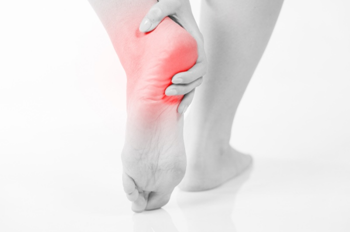
Problems with heel pain can be excruciating. That “bruised feeling” when bearing the body’s weight in the morning can make it difficult to stand. If it happens when getting into a sitting position through the day, it can affect the quality of life.
One of the possible causes of this is structural. There is a connection between the amount of time spent on the feet, the weight of the body, and a lack of flexibility in the ankle. Heel pain might be caused by poor posture, bad form walking or just a lot of weight being put on them as you move.
Podiatry can help restore joint mobility and muscle flexibility, as a way to reduce the pain. With the right therapy, patients can walk more freely and no longer feel pain when supporting their weight.
Some therapeutic options may address heel pain.
There are manual therapies. These use motion and exercise to fix the muscles and joints. With the body corrected, the pain goes away.
Orthotics are useful if the problem is structural, rather than due to an injury. If symptom relief is the only goal, semi-customized inserts are ideal. Personalized ones are needed for long-term function.
Education on how to reduce pain, including relevant stretches or how to walk to assist with the body’s natural rhythms, can also help.
Another option is to use better footwear. Podiatry can recommend which options work best for you and your situation.
There are also other conditions that may be addressed by restoring joint mobility and the flexibility of your muscles. In particular, you might want to focus on the ankle and big toe joints.
Achilles Tendonitis, Sever’s Disease, Morton’s Neuroma, and Patellofemoral Syndrome can all benefit from therapy provided by podiatry. Stress fractures and shin splints are also addressed by many of the same techniques used to alleviate heel pain.
Patients with osteoarthritis also benefit from podiatry.